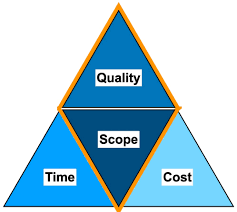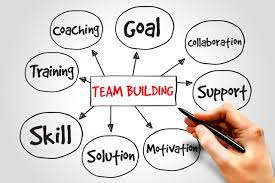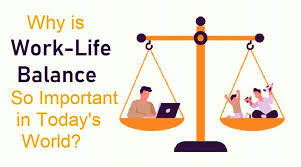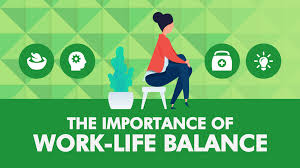It is always known, observed, and seen that Project Managers use tradeoffs to provide decision-makers with data on the impact of a change on scope, time, cost, quality and risks (Though I mention this, I have never seen a proper and adequate level of impact analysis to the level as needed and required), then the sponsor understands the full impact whenever they have a variance or a change request.
Tradeoffs help maintain the project’s feasibility.

Check this fictional conversation:
Situation – Fixed Price, Fixed Scope, Quality Parameters have been agreed and Cost is Pre-agreed, The SoW is signed off. Contracts are in place. Planning is done and dusted, now the project is in execution phase.
And Bingo … we have an interesting request from the customer to the sponsor to change the dates of delivery and so the conversation happens somewhat like this:
The sponsor says to the project manager, “I want to move up the finish date from June 30 to May 30. Make it happen.” The sponsor starts to leave the meeting.
The project manager says, “Yes, I can shorten the duration of the project by four weeks. Your assistant told me about that, and I modeled it. To cut a month off the duration, I will need to have two additional developers and a tester for the month of April and the budget will increase by $10,000 for extra resources.”
A tradeoff has two sides. First, there’s the positive side where the PM shortens the duration of the project. Second, there’s the negative side where the project manager says they need an added budget for two additional engineers for the month and additional consultants.
The sponsor says,” No all I want is to cut the duration. No additional people or money.”
The PM says, “If I told you I could do that it would be lie. To shorten the date there will be other changes. It is not possible without consequences.”
The sponsor responds, “A good PM would be able to do whatever I want!”
Then the project manager replies, “But it would be a lie.”
Who wins this conversation / argument / decision making process, well it may seem that that the Sponsor would force the Project manager to agree to his / her ideas and thought process, but ultimately project drags on time and cost, has poor quality (a lot of defects, un-tested elements), team members have burnt out, the morale is low and customer is unhappy writing stinker of emails, there is a all-round loss and credibility issue, but who cares.
Did the sponsor review the impact of the new need / requirement where in the timelines / duration has been reduced?
Requirements for Trade offs
Tradeoffs are part of the toolset good project managers use. They must build the project plan with quantified measurable outcomes for every delivery. And the schedule must have work estimates and accurate precedence relationships. Then model every change with its compensating tradeoffs.
When project sponsors want to make a change, successful project managers never say, “Oh no, we can’t add that to the project.” What they say is, “Certainly I can add that to the project, but I will need three more people full time.” Other negative sides of the tradeoff could be, “We will have to increase the budget by $ XXX” or “We’ll have to reduce the savings in our scope by $ XXX.”
This is the language of tradeoffs. The project manager is not saying no. Instead, they are telling the sponsor or stakeholder what it will “cost” to bring about the change they want. Tradeoffs maintain the feasibility of the project. Merely shortening the duration does not.
There are no easy solutions and no easy decisions that one could make … Impact Analysis and Cost of Delay as a concept should be utilized for proper decision making.
Remember in any project, on one side we have the leadership / sponsors and others who at times have un-reasonable demands and the other end of the spectrum we have project manager who is trying to make the ends meet … Due to job constraints and lack of their ability to standup, the project manager looses the game and finally leadership and sponsors lose money, get poor quality and loss of face to the customers.
We have always tried to be penny-wise pound foolish
With all said and done, changes would occur and would be required to be managed. How should a tradeoff occur? What parameters should the Project manager be concerned about?
Juggling the 4 corners of the Project (Standing on 4 Pillars)
Any project would have to learn to live with these 4 corners of the game:
- Project scope (including quality of deliverables)
- Time / Duration
- Risk
- Cost (human resources and materials).
Which is more important? Given an option to make a choice, Let see a few permutation / combination to make a judgement call.
Let us say Scope is Changing, it is increasing … Then
Scope Change: Impact would be on: Quality, Cost, Time (atleast on one of them, but if you really think, it will impact all of them)
Where do we prioritize the approach, what should be the order of our decision making and relevant / related impact, Should it?
| Order of Impact / Decision | Order of Impact / Decision | Order of Impact / Decision |
| Cost | Quality | Time |
| Time | Cost | Cost |
| Quality | Time | Quality |
It is not an easy decision, but if quality is a thought, then as per me, it is a bad / poor idea. Spend more on Cost and try to minimize the impact on Quality and Time
The project is like a tube of toothpaste. When management / sponsors squeezes on a project’s duration corner by cutting the due date by a month, the toothpaste compensates by oozing out from one of the other corners. When the sponsor squeezes the duration, it will deliver less scope, cost more, or have a higher risk of failure and this is the kind of impact analysis that is required to be performed by the project and related stakeholders.
Changes in one parameter would always impact at least one other corner. That fact exists whether people recognize it or not. It’s not realistic to assume that making arbitrary changes to one corner of the project, like the duration, can happen without any compensating effects through the rest of the project.
Interestingly, the majority of the leadership and sponsors fail to recognize this impact. Because in most projects only one, or at most two, of these corners is measurable. The completion date is always measurable and is often rock solid. In some situations, the project budget is also measurable. But most internal projects have no other measurable dimensions. Even with the two measured dimensions of duration and budget, the business value of the project (the scope) and the risk of not delivering that scope on time are usually unmeasurable. So executives continue to make arbitrary changes to the duration and the budget and think that it will have no impact on the project’s scope, quality or risk.
What concerns me is that most of the leadership have no clue on this front, each of these leadership person must have risen through the ranks and would have faced these similar challenges in their project management days and now they behave very differently. Does change in position also impact the way a correct process should be adopted?
Is this science so difficult that we do not understand elements?
I recommend performing “What If” Analysis, where one can watch the impact of moving one parameter (or as we say one pillar) over others. This requires building some models (but once you do it, will serve the organization for its life), then performing different permutation and combinations can give all type of results, choose the lesser evil.

When doing such analysis, keep emotions out of the window and work on real and hard facts.
Do let me know your experiences on this front, would be an great discussion over coffee !!!













